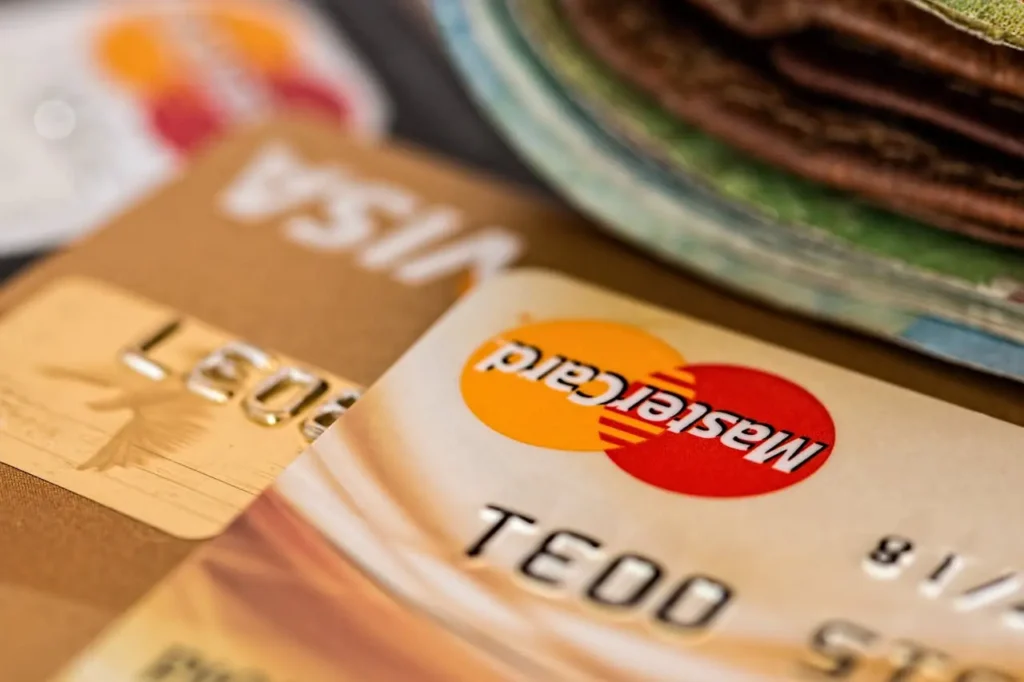Table of Contents
ToggleFacing Student Loan Stress? Here’s How to Take Back Control
In 2025, many Americans are confronting the reality of overwhelming student loan debt in a post-pandemic economy marked by rising living expenses, uncertain job markets, and shifting federal policies. If you’re falling behind on student loan payments, it’s essential to realize that you are not alone, and you do have options. Acting early is critical. The longer you wait, the fewer tools you’ll have at your disposal to prevent long-term damage to your credit and financial future. Being proactive can open up several lifelines, including alternative repayment plans, government relief programs, and refinancing opportunities tailored to your circumstances. Whether you have federal loans, private loans, or both, the key to regaining control lies in understanding your rights and leveraging available resources to stay afloat.
Why Skipping Payments Can Derail Your Finances
Missing a single student loan payment might seem insignificant, but the repercussions can snowball quickly. For federal student loans, delinquency begins immediately after a missed due date and can be reported to credit bureaus after 90 days. This reporting can result in a credit score drop of 50 to 100 points, impacting your ability to secure future loans, rent housing, or even land a job that requires a credit check. After 270 days of non-payment, your federal loan enters default, triggering more severe actions such as wage garnishment, tax refund interception, and additional collection costs. For private loans, timelines are shorter and options more limited; some lenders declare default after just 30 to 60 days. Legal proceedings can also follow. Moreover, interest continues to accrue during periods of non-payment, inflating your balance and extending your debt horizon. Defaulting on student loans can stay on your credit report for up to seven years, making it critical to take corrective action as early as possible.
Short-Term Fixes to Stay Afloat
If you’re experiencing a temporary setback like job loss, medical emergency, or reduced income, short-term relief options can help you avoid default. These solutions won’t eliminate your debt but can provide breathing room until you’re in a better position to resume payments. It’s crucial to evaluate these options with a clear understanding of the terms and implications, especially regarding interest accrual and eligibility.
Deferment allows you to pause your federal student loan payments under specific conditions such as economic hardship, active military duty, or enrollment in graduate school. For subsidized federal loans, the government covers your interest during deferment, which can prevent your loan balance from increasing. Forbearance, on the other hand, temporarily suspends your payments regardless of your loan type, but interest accrues during this time, increasing your total repayment cost. As of 2025, the U.S. Department of Education has made it easier to request forbearance online and has implemented tools that automate eligibility checks for those affected by natural disasters or federal emergencies. It’s important to note that private lenders may offer forbearance too, but the terms are typically stricter and less generous than federal programs. Therefore, always compare your loan type and provider guidelines before making a request.
2. Talk to Your Loan Servicer Immediately
Your loan servicer is your gateway to all available relief options. Reaching out before your account becomes delinquent can make a significant difference in the support you receive. Servicers can help you enroll in lower monthly repayment plans, apply for deferment or forbearance, or explore forgiveness programs you might qualify for. Be prepared to share your financial documents, including income verification and household expenses. Document every interaction and request confirmation in writing. In 2025, some servicers offer online chat support and mobile app notifications to make communication more efficient. Staying engaged and proactive allows you to adjust your strategy as your circumstances evolve and ensures you stay informed about new federal or state-level relief initiatives.
Explore Long-Term Repayment Alternatives
When financial hardship is ongoing, you need more than a temporary fix. Long-term solutions focus on adjusting your loan terms to better align with your income and life goals. These options are particularly important if your debt is high relative to your income or you expect prolonged financial instability. Understanding the ins and outs of these federal programs can help you make a well-informed decision.
1. Income-Driven Repayment (IDR) Plans
IDR plans are a lifeline for borrowers with limited or unstable income. These plans calculate your monthly payment based on a percentage of your discretionary income and family size, often reducing payments to $0 for low-income earners. In 2025, the SAVE (Saving on a Valuable Education) Plan has been partially halted due to ongoing court challenges, but other IDR plans like Pay As You Earn (PAYE), and Income-Based Repayment (IBR) remain available. Payments typically range from 10% to 15% of your discretionary income, with loan forgiveness available after 20 or 25 years of qualifying payments. Importantly, recent legislation has made IDR plans more borrower-friendly, such as by waiving interest capitalization and offering automatic annual recertification for eligible participants. IDR plans are only available for federal loans, so private loan borrowers must look to refinancing or lender-specific hardship programs instead.
2. Loan Consolidation
Loan consolidation involves combining multiple federal loans into one Direct Consolidation Loan, which simplifies repayment by reducing the number of bills you manage monthly. While consolidation doesn’t lower your interest rate, it can result in a longer repayment term and lower monthly payments. This option can also help you regain access to income-driven repayment plans and loan forgiveness programs if you’ve previously defaulted. However, it resets your payment count toward forgiveness under Public Service Loan Forgiveness (PSLF) or IDR, so it’s not always the best route if you’re already on track for loan cancellation. Borrowers in 2025 should also note that federal consolidation is free and available through the Federal Student Aid portal, not through third-party companies that may charge fees for the same service.
3. Public Service Loan Forgiveness (PSLF)
PSLF remains one of the most powerful tools for reducing student debt for eligible public sector workers. If you work full-time for a government agency or nonprofit and make 120 qualifying payments under an IDR plan, your remaining balance may be forgiven tax-free. In recent years, PSLF has undergone major reforms, including the Limited PSLF Waiver and the one-time IDR account adjustment, both of which corrected prior servicer errors and expanded eligibility. In 2025, it’s critical to ensure that your employer is listed as qualifying on the Department of Education’s PSLF Help Tool and that you annually certify your employment. Keeping accurate employment and payment records can help you avoid delays or denials down the line.
Can You Refinance? Know the Pros and Cons
Refinancing your student loans through a private lender can be an effective strategy if you have strong credit, stable income, and no need for federal protections. A refinance replaces your existing loans with a new one, often at a lower interest rate. This can save you thousands of dollars over the life of your loan, especially if you had high-interest federal PLUS loans or private loans. However, refinancing federal loans turns them into private loans, permanently forfeiting benefits like IDR plans, deferment, forbearance, and forgiveness programs. In 2025, some lenders offer hybrid options that include temporary hardship protections or interest-only periods, but these benefits are not guaranteed. Before refinancing, shop around and use prequalification tools to compare offers without impacting your credit score. Make sure the savings outweigh the loss of federal perks, and read the fine print regarding loan terms, fees, and borrower protections.
Other Last-Resort Options
If your financial situation is truly unmanageable, you may need to explore options that can resolve or reduce your debt outside of the traditional repayment system. One such option is loan settlement, where the Department of Education agrees to accept a lump-sum payment of less than what you owe. This is rare and typically requires proof of extreme financial hardship, such as long-term disability or unemployment. While settlement can reduce your total debt, it may come with tax implications, as forgiven amounts could be considered taxable income. In 2025, the Internal Revenue Service (IRS) still treats forgiven federal debt as non-taxable through 2025 under the American Rescue Plan Act, but this provision may not be extended beyond this year. Private loan settlements are even more complex and may involve negotiation through a collections agency or legal representative. These should only be pursued with the help of a financial advisor or attorney experienced in student debt relief.
Building a Financial Safety Net
Preventing future repayment issues starts with building a strong financial foundation. Budgeting remains one of the most effective tools in managing debt. Use methods like zero-based budgeting, which allocates every dollar to a specific purpose, or the 50/30/20 rule, which divides income between needs, wants, and savings. These systems help you identify unnecessary expenses and create a roadmap for debt reduction. Simultaneously, begin building an emergency fund with three to six months of essential expenses. Use high-yield savings accounts that offer competitive interest rates and Federal Deposit Insurance Corporation (FDIC) insurance to grow your savings passively. In addition to budgeting and saving, consider boosting your income through side hustles like freelancing, online tutoring, or gig work. These extra earnings can be directed toward loan payments or emergency savings, helping you stay ahead of financial curveballs.
Final Thoughts: You Have More Power Than You Think
Facing unaffordable student loans can feel paralyzing, but the truth is that borrowers today have more tools and protections than ever before. Federal relief programs, IBR plans, and consumer protections are designed to help you manage your debt without sacrificing your financial future. The key is to act early, communicate regularly with your loan servicer, and explore all available options before your loan falls into default. By taking control of your budget, leveraging government support, and staying informed about policy changes, you can navigate your student loan challenges with confidence. In the long run, strategic planning and resilience can turn your debt burden into a manageable part of your financial journey.
Frequently Asked Questions (FAQ)
What should I do if I can’t afford my student loan payments in 2025?
If you’re struggling to afford your student loan payments in 2025, the first step is to contact your loan servicer immediately. Acting early allows you to access relief options such as deferment, forbearance, or income-driven repayment (IDR) plans. These programs can temporarily reduce or pause your payments without causing your loans to go into default. You should also explore long-term strategies like loan consolidation or refinancing, depending on your loan type and financial stability. Staying proactive helps protect your credit score and ensures you remain eligible for forgiveness programs and new federal protections.
How soon does student loan delinquency begin after a missed payment?
Delinquency on federal student loans begins as soon as you miss a payment, even by a single day. However, it typically isn’t reported to credit bureaus until you are 90 days past due. If the delinquency lasts for 270 days, your loan goes into default, which triggers severe consequences such as wage garnishment and loss of eligibility for federal benefits. Private lenders often operate on shorter timelines, sometimes declaring default after 30 to 60 days. Therefore, it’s crucial to act promptly and communicate with your lender at the first sign of financial trouble.
Can I get my student loans paused temporarily in 2025?
Yes, in 2025, you can pause your federal student loans through deferment or forbearance if you meet certain eligibility criteria. Deferment is typically granted for reasons like economic hardship, military service, or returning to school, and subsidized loans won’t accrue interest during this time. Forbearance is more widely available and easier to request, but interest will continue to accumulate, increasing your total balance. Many servicers now offer online tools to request these pauses quickly. If you have private loans, check with your lender, as their policies are often more restrictive.
What is an income-driven repayment plan and who qualifies for it?
Income-driven repayment (IDR) plans adjust your monthly student loan payments based on your income and family size. These plans are available for most federal student loans and are especially helpful if you’re facing long-term financial hardship. In 2025, options like Income-Based Repayment (IBR) and Pay As You Earn (PAYE) remain active, even as the SAVE plan faces legal challenges. Some borrowers may qualify for $0 monthly payments, and all IDR plans offer eventual loan forgiveness after 20 to 25 years of qualifying payments. Private loan borrowers do not qualify for IDR but may have access to hardship programs offered by their lenders.
Is it a good idea to consolidate student loans if I’m behind on payments?
Consolidating your federal student loans can be a smart move if you’re behind on payments and want to simplify repayment or regain eligibility for forgiveness and IDR plans. A Direct Consolidation Loan combines multiple federal loans into one, potentially lowering your monthly payment by extending the term. However, consolidation restarts your progress toward forgiveness programs like PSLF or IDR, so timing matters. It’s also important to ensure you consolidate through the official Federal Student Aid website to avoid third-party fees or scams. This option is not available for private loans.
Can refinancing help lower my student loan payments in 2025?
Refinancing your student loans in 2025 can help reduce your interest rate and monthly payments—especially if you have good credit and a stable income. It’s typically best suited for borrowers with private loans or those who no longer need federal loan protections like deferment, forbearance, or forgiveness. When you refinance a federal loan, you lose access to federal benefits permanently. Some lenders now offer hybrid refinance options with temporary hardship protections, but these are not guaranteed. Always compare offers, read the terms carefully, and use prequalification tools to avoid hurting your credit score.
How does Public Service Loan Forgiveness (PSLF) work in 2025?
Public Service Loan Forgiveness (PSLF) in 2025 forgives the remaining balance of your federal student loans after you make 120 qualifying payments under an income-driven repayment plan while working full-time for a government or nonprofit organization. Recent reforms, including the one-time IDR adjustment and Limited PSLF Waiver, have made it easier for borrowers to qualify. To stay on track, you must annually certify your employment and ensure your employer is eligible through the PSLF Help Tool. Forgiven balances under PSLF are not considered taxable income.
Can I negotiate a settlement for my student loan debt?
Student loan settlements are rare but possible under extreme financial hardship. The Department of Education may accept a lump-sum settlement for less than the total owed if you can prove long-term inability to repay, such as due to disability or prolonged unemployment. In 2025, forgiven federal student loan amounts are still not taxable under the American Rescue Plan Act, but this tax benefit is set to expire after this year unless renewed. Private loan settlements are more complicated and often involve negotiations through collections agencies or legal representatives.
Will missing a student loan payment hurt my credit score?
Yes, missing a student loan payment can significantly harm your credit score. Once your loan is 90 days delinquent, the servicer reports it to the credit bureaus, which can cause your score to drop by 50 to 100 points or more. Defaulting on a loan makes matters worse by adding a major derogatory mark that can remain on your credit report for up to seven years. Staying current through deferment, forbearance, or modified repayment plans can help you avoid this damage and preserve your financial reputation.
What are the best budgeting strategies to avoid falling behind on loans?
To avoid missing student loan payments, adopt a consistent budgeting strategy like the 50/30/20 rule or zero-based budgeting. These systems help you allocate your income toward essentials, discretionary spending, and debt or savings. In 2025, many borrowers also use digital budgeting apps and high-yield savings accounts to manage cash flow and build emergency funds. Creating a financial buffer of three to six months of living expenses can prevent future defaults and give you more flexibility in times of crisis. Additionally, consider side hustles or gig work to boost your income and stay ahead of your payment schedule.
Featured image credit: Freepik


